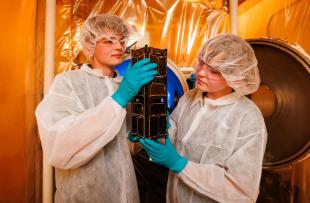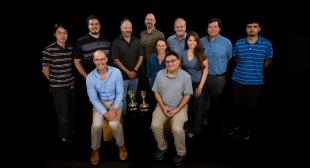Cal Poly's 12th CubeSat Mission Wings Into Space in a Novel Way
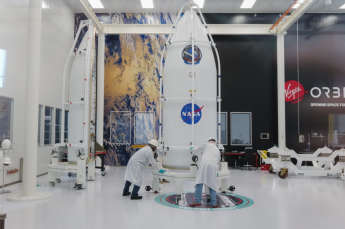
A Cal Poly CubeSat will ride on Sunday Jan. 17 aboard Virgin Orbit’s LauncherOne rocket on its second attempt to reach space.
The rocket includes nine other NASA-sponsored small satellites on the space agency’s next Educational Launch of Nanosatellites (ELaNa) mission. This is the first payload carried by Virgin Orbit’s rocket that will be carried aloft under the wing of a modified Boeing 747 to an altitude of 35,000 feet, released and fired into orbit.
The mothership jet, named Cosmic Girl, will take off from Mojave Air and Space Port, which will release the two-stage LauncherOne off the coast of Southern California. The launch window is 10 a.m. to 2 p.m. Pacific Time, the company announced via social media. The launch had originally been scheduled for Wednesday, Jan. 13, with "additional windows throughout January if needed."
The mission includes ExoCube 2, a satellite about the size of a loaf of bread that was built over several years by a group of about 50 multidisciplinary Cal Poly students, said advisor Pauline Faure, an aerospace engineering assistant professor in the College of Engineering.
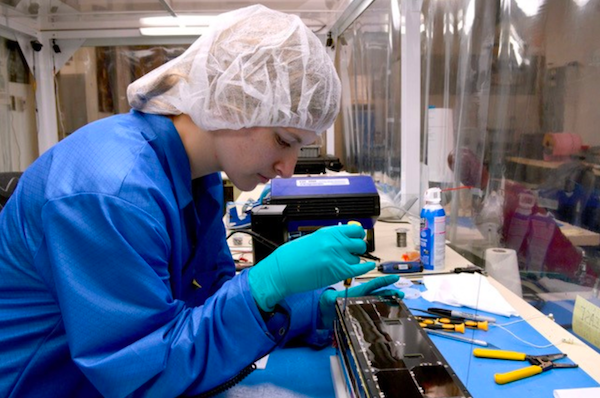
“The mission is scientific in nature,” Faure said, “and aims to acquire data on ions’ mass and density in the exosphere,” the uppermost region of Earth’s atmosphere as it gradually fades into the vacuum of space.
“To execute the mission,” Faure added, “NASA’s Goddard Space Flight Center developed a spectrometer, and the Cal Poly CubeSat Laboratory team was tasked to design, develop, manufacture, assemble and test the supporting elements of the spacecraft system — structure, power system, communication, flight software, etc. The students were definitely the driver of the project execution and deserve the full credit of the incredible work they achieved.”
Once Cal Poly’s 12th CubeSat achieves orbit, a student team will use the campus CubeSat Lab groundstation to download scientific data from the spacecraft and share it with their counterparts at the University of Wisconsin and the University of Illinois who are responsible for its interpretation.
ExoCube 2’s mission is to expand knowledge of the composition and the current state of activity in the thin exosphere atmosphere, some 600 km (370 miles) above sea level. The data will be useful in better predicting space weather phenomena in order to forecast potential effects of ions on satellite communications and spacecraft performance.
The three-unit CubeSat is a relaunch of the original ExoCube, which launched in early 2015 but suffered from antenna problems. ExoCube 2 underwent a complete redesign of the antenna deployment mechanisms.
This will also be Virgin Orbit’s second attempt to reach orbit. The “Launch Demo 2” mission was delayed from mid-December, because COVID-19 contact tracing led to a round of “precautionary quarantines” of the company’s personnel. Quarantines meant the company had “fallen below the number of staff we feel we require to prudently and safely proceed with pre-launch operations,” the company said in a release.
For the past few years, Virgin Orbit has been developing and testing its unique launch system, which involves using the refitted Virgin Atlantic 747 to carry a rocket nearly 7 miles high, where the rocket is released and its engine ignites following a 4-second drop.
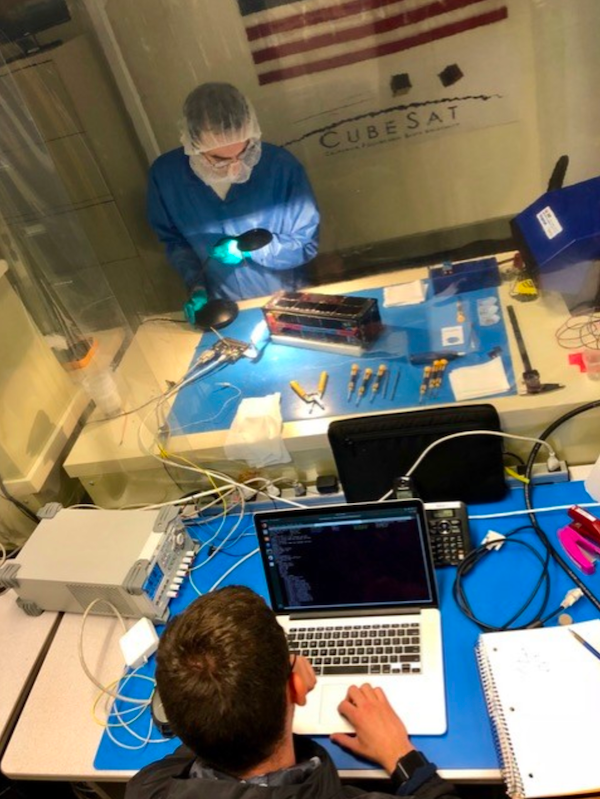
After an engine burn and stage separations, LauncherOne will deliver its payload to orbit, while Cosmic Girl returns to the Mojave Air and Space Port airstrip. It’s the same facility where Cal Poly alumnus Burt Rutan (aerospace engineering, ’65) developed and launched SpaceShipOne — the world’s first privately built aircraft to reach space in 2004.
This will also be the NASA’s ELaNa mission No. 20. The Educational Launch of Nanosatellites program was started in 2010 to attract and retain students in STEM — science, technology, engineering and mathematics — disciplines. Managed by the Launch Services Program at NASA’s Kennedy Space Center in Florida, ELaNa introduces educational spaceflight to high schools and colleges across the nation.
Cal Poly’s last ELaNa satellite was LEO, or Launch Environment Observer, a two-unit CubeSat that launched in June of 2019 aboard a SpaceX Falcon Heavy rocket from NASA’s historic Pad 39A at the Kennedy Space Center in Florida.
A low-cost platform for agency missions, CubeSats and other small satellites are playing a larger role in space exploration, technology demonstration, scientific research, and educational investigations at NASA. The other nine CubeSats on this mission were designed and built by seven other universities in the United States, as well as one NASA center. They include:
- PolarCube, University of Colorado at Boulder, Boulder, Colorado
- MiTEE, University of Michigan, Ann Arbor, Michigan
- CACTUS-1, Capitol Technology University, Laurel, Maryland
- Q-PACE, University of Central Florida, Orlando, Florida
- TechEdSat-7, NASA Ames Research Center, Moffett Field, California
- RadFXSat-2, Vanderbilt University, Nashville, Tennessee
- CAPE-3, University of Louisiana at Lafayette, Lafayette, Louisiana
- PICS (two CubeSats), Brigham Young University, Provo, Utah
NASA selected and sponsored Cal Poly and the other providers through the agency’s CubeSat Launch Initiative. By offering small satellite developers a relatively low-cost avenue to conduct science investigations and technology demonstrations in space, NASA gives K-12 schools, universities and nonprofit organizations hands-on flight hardware development experience.
“The journey to this launch has been long and challenging,” said Scott Higginbotham, ELaNa 20 mission manager. “Our CubeSat developers have invested much of themselves in their spacecraft, and I know they’ll all be thrilled to see them fly later this month.”


